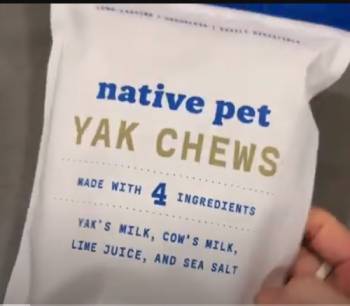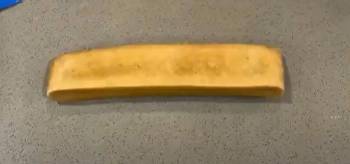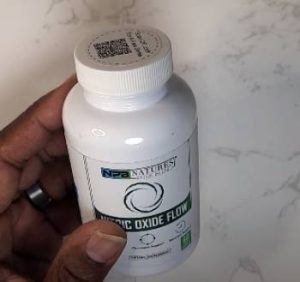Yak chews, the long-lasting, high-protein dog treat that has taken the canine world by storm, has left many pet owners asking the question: “Why are Yak Chews so expensive?”
We must delve deeply into the realm of yak farming, cheese-making customs, and the effects of supply and demand in order to adequately respond to this topic.
By the time you’re done reading, you’ll know more about the elements influencing the price of these widely-liked dog chews, as well as the advantages and disadvantages of giving your pet Yak Chews.
The Journey of Yak Chews: From The Himalayas To Your Dog’s Bowl

Yak Chews, also known as Himalayan dog chews, are made from yak milk.
This special element comes from the high-altitude regions of Nepal, Tibet, and Bhutan, where local tribes have long raised yaks.
To appreciate the true cost of Yak Chews, let’s follow the path of this unique product from its humble beginnings to its final destination as a dog treat.
- The Yak Milk: An Elusive and Precious Resource
Yak milk is the main ingredient in Yak Chews, and obtaining it is no small feat.
Yaks are not as common as cows, and their milk production is far lower, making yak milk a rare and valuable commodity.
Yaks are also indigenous to the hard environment and climate of the Himalayas, which offers special difficulties for the farmers who look after these animals.
- A Centuries-Old Cheese-Making Tradition
The process of making Yak Chews is rooted in the traditional cheese-making techniques used by the Himalayan communities for centuries. Yak milk is combined with cow milk, lime juice, and salt to create a hard, long-lasting cheese.
This process is labor-intensive, requiring skilled artisans who carefully craft each piece by hand. The cheese is then smoked and dried, further adding to the time and effort needed to produce Yak Chews.
- The Global Demand for Yak Chews
Yak Chews have experienced a surge in popularity in recent years, thanks to their reputation as a healthy, long-lasting, and natural dog treat. This increased demand has strained the limited supply of yak milk, driving up the price of this already scarce resource.
Additionally, the increased demand has led to more middlemen and brokers becoming involved in the supply chain, each taking their cut and pushing the price even higher.
Pros and Cons of Yak Chews
Now that we understand the factors contributing to the high cost of Yak Chews, let’s examine the pros and cons of choosing these treats for your dog.

Pros
- Long-lasting: Yak Chews are known for their durability, providing hours of chewing entertainment for your dog.
- High-protein, low-fat: Dogs on a diet can choose the nutritious Yak Chews treat because it is high in protein and low in fat.
- Natural and easily digestible: Made from all-natural ingredients, Yak Chews are more easily digestible than many synthetic dog treats.
- Dental benefits: The hard texture of Yak Chews can help to clean your dog’s teeth and promote healthy gums.
Cons
- Price: As we’ve discussed, the high cost of Yak Chews can be a deterrent for some pet owners.
- Choking hazard: Like any hard dog treat, Yak Chews do present a choking hazard if your dog tries to swallow a large piece.
- Limited availability: Due to the limited supply of yak milk and the labor-intensive production process, Yak Chews may not always be readily available.
Frequently Asked Questions (FAQ)
Dog yak chews are expensive due to the scarcity of yak milk, the labor-intensive cheese-making process, and the increased global demand for these treats. Yaks produce far less milk than cows, and obtaining their milk requires navigating the harsh terrain and climate of the Himalayas. The traditional cheese-making techniques used to create Yak Chews are time-consuming and require skilled artisans, adding to the overall cost.
Many veterinarians approve of yak chews as a healthy and natural treat option for dogs. Yak chews are high in protein and low in fat, making them a suitable treat for dogs on a diet. They are also easily digestible and can help clean your dog’s teeth. Before including any new treats or supplements in your dog’s diet, talk to your veterinarian.
The size of the chew and your dog’s chewing habits will determine how long your dog should enjoy a yak chew. Yak chews are designed to be long-lasting, so they can provide hours of chewing entertainment. However, it’s essential to supervise your dog while they’re enjoying a yak chew and remove any pieces that become small enough to pose a choking hazard.
Both yak chews and bully sticks have their advantages and drawbacks. Yak chews are known for being longer-lasting than bully sticks, but they can be more expensive due to the reasons discussed earlier. Bully sticks are often more affordable and still provide dental benefits and chewing satisfaction, but they tend to have a stronger odor and may not last as long. The ideal option will rely on your own preferences and the particular requirements of your dog.
Yak cheese is expensive due to the limited supply of yak milk and the labor-intensive process required to create the cheese. Yaks produce less milk than cows, and farming yaks in the harsh conditions of the Himalayas presents unique challenges. The traditional cheese-making process used to create yak cheese, including Yak Chews, requires skilled artisans and a significant amount of time and effort, further driving up the cost.
Making The Choice: Are Yak Chews Worth The Price?
Now that we’ve uncovered the reasons behind the high cost of Yak Chews and explored their pros and cons, it’s time for you as a pet owner to decide if these treats are worth the investment.
Consider your dog’s specific needs, dietary restrictions, and chewing habits when making your decision.
Yak Chews can be the best option for your dog if you’re seeking for a long-lasting, healthy, natural treat that also offers dental advantages.
However, if the cost is a significant concern, you might want to explore other options, like bully sticks or alternative natural chews, that still provide chewing satisfaction and dental benefits without breaking the bank.
What’s best for your furry friend ultimately comes down to personal preference. Regardless of which treats you choose, make sure you watch your dog while they are enjoying them and speak with your veterinarian if you have any concerns about their diet.
In conclusion, Yak Chews, while expensive, offer a unique and healthy treat option for dogs. The high cost is attributed to the scarcity of yak milk, the labor-intensive production process, and the growing global demand for these treats.
You may decide whether Yak Chews are the best option for your dog by considering the advantages and cons and the elements that influence the pricing.
Happy chewing!



